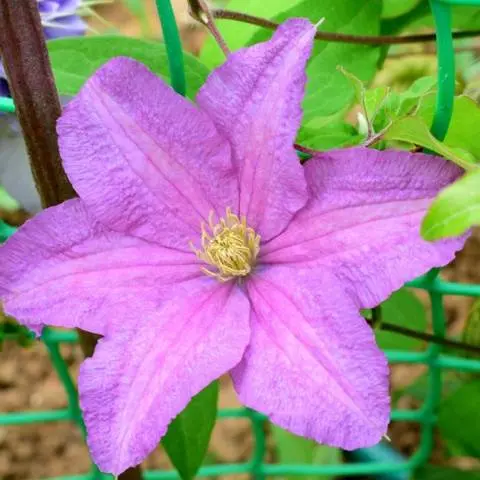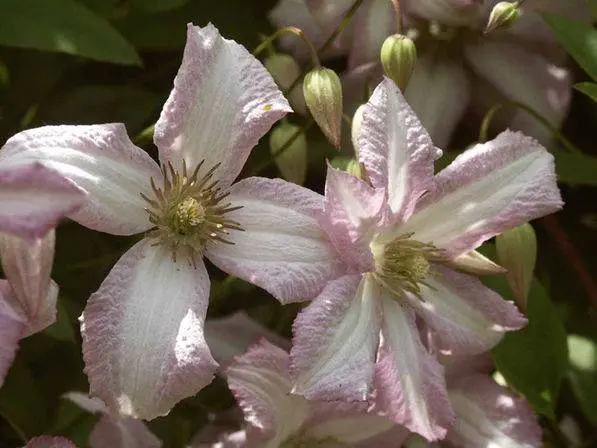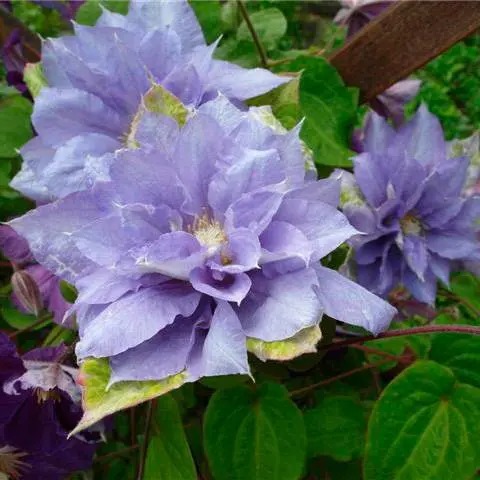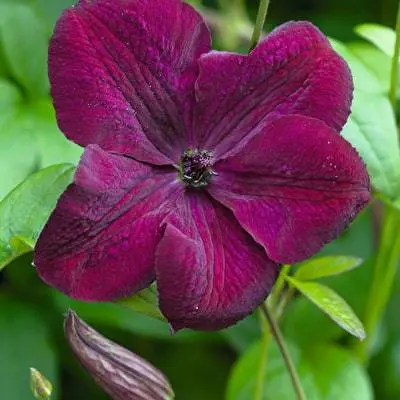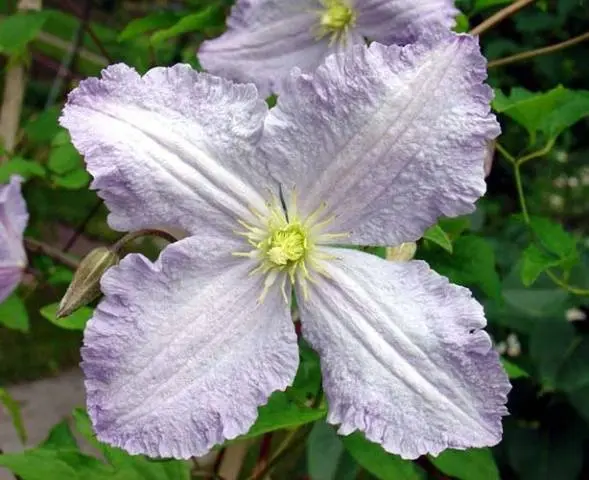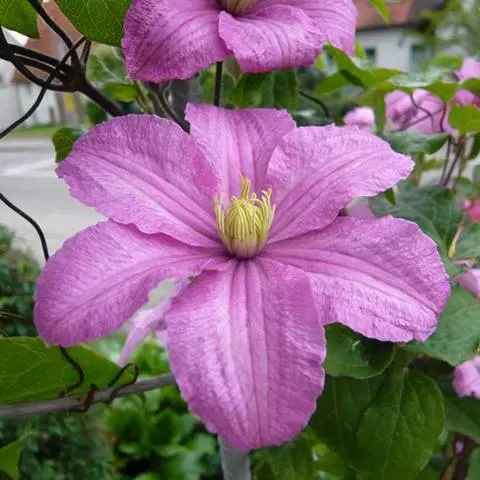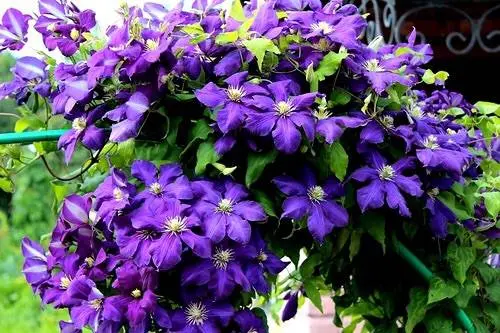Contents
Planting clematis and successfully caring for them in the Urals are quite possible. You just need to choose hardy vines, provide them with a cozy place and shelter for the winter.
Colorful clematis bloom magnificently in Chelyabinsk and Krasnoyarsk! The gardener only needs to choose a variety that will take root in these regions, and take care of a spectacular, unpretentious vine in the fall. Growing clematis in the Urals has its own subtleties, but a beginner in floriculture will also cope with them.

What plants to choose
Breeders are constantly working on breeding flowering climbing plants for cold regions. Today there are up to 2000 varieties of clematis. Care and planting of clematis in the Urals will not be difficult if the grower chooses hybrid vines.
Plants of Vititsella, Integrifolia, Zhakman hybrids of the 3rd pruning group are hardy, which implies a complete shortening of the shoots. Clematis of the 2nd pruning group is also grown in the Urals when part of the shoot is shortened. Hybrid vines planted in the Urals present their care requirements to the owner of the site.
- Landing in a corner protected from strong air currents;
- Soil permeability;
- Regular feeding;
- Installation of a solid support;
- Reliable shelter for the winter.
Viticella Group
Winter-hardy varieties of clematis suitable for the Urals endure frosts down to -27 оC. Shrubs with long vines up to 3,5 m and complex leaves. They bloom profusely from mid-summer to autumn. Large flowers reach 12 cm in diameter, different varieties of predominantly bright colors: red, purple, pink. Beautiful vines of this group are not subject to a dangerous disease that often affects clematis – wilting. One of the most famous in the Vititsella group is the French variety Ville de Lyon (Ville de Lyon) with carmine flowers and white stamens. When deciding which clematis to plant in the Urals, you can get acquainted with many varieties of vines in this group.
Some of the plants are listed below:
- Danuta (Danuta) – petals of a touching shade of a rose;

- Little nell – white center of the petals with a light purple border;

- Mazury – terry blue flower;

- Royal Velours – petals are red-purple with a creamy center.


Hybrids Jacqueman
Hardy clematis, which are suitable for the Urals, manage to create a maximum of decorativeness in a short warm period. Large-flowered vines grow up to 4 m. The vine has a powerful root system, beautiful feathery leaves, flowers up to 20 cm in various shades: purple, lilac, carmine, red. Flowers are formed on the shoots of the current year in the second half of summer. Liana is decorative for a long time. For the winter, leave 0,3 m or cut off completely.
You can choose from the group a variety for growing clematis for the Urals to your liking:
- Blue Angel with light purple flowers;

- Comtesse de Bouchaud – light pink flowers;

- space melody – cherry-purple flowers;

- Blue flame – bright purple petals;

- Moonlight – petals with a lavender tint.

Integrifolia Group
Herbaceous clematis, recommended for the Urals, is low, rises to 1-2 m. The whips need to be tied up, otherwise they will simply spread on the ground. Flowers grow on new shoots, have an original bell shape. Liana blooms from July to September, successfully decorates shrubs that have faded since the beginning of summer, on the branches of which delicate lashes of grassy clematis are thrown. Varieties of these clematis in the Urals are easily covered for the winter.
Interesting varieties:
- Alenushka with dark pink flowers;

- Hakura, Japanese selection, with white-lilac flowers;

- Clematis Durana, with 4 petals of a bright purple hue.

Flamula Group
Represented by a charming specimen of the Japanese selection Sweet autumn, or Terniflora, which has long been planted in the Urals. Liana, which in everyday life is called “fluffy cloud”, is a real waterfall of hundreds of small creamy-white star-shaped flowers 2-4 cm in size, exuding a pleasant aroma. Flowering later – from August until frost on growing shoots. Clematis leaf petioles cling to supports, the vine grows up to 3 m. Fits the definition of frost-resistant clematis for the Urals, can withstand up to -34 оC. For the winter they do not cut, but cover the whips. Clematis Sweet autumn is ideal for masking a high fence or walls.
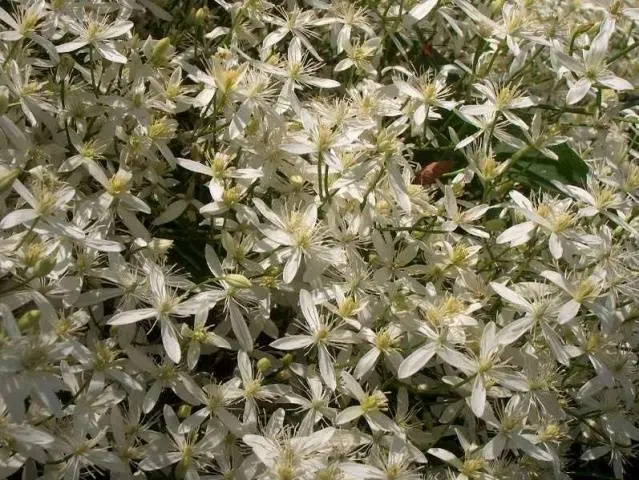
partner plants
Near clematis, other perennial climbing plants create charming screens: campsis, Amur or girlish grapes. Annual creepers are no less colorful: multi-colored morning glory, moonflower, tunbergia. Roses are considered a classic pair for the best varieties of clematis for the Urals. Contrasting or monophonic low annuals, lawn grass, evergreen shrubs are planted below. Bright yellow evening primroses look spectacular with clematis.
Reproduction
Different varieties of clematis in the Urals are propagated by removing vines from the bush for rooting, cutting cuttings or dividing the root system of the plant.
Layers
This is the easiest and most successful way to propagate clematis.
- From the bush in the spring they dig a groove up to 15-18 cm deep and lay a healthy long shoot of clematis, be sure to bring its top to the surface;
- Liana is covered with soil and systematically watered. After some time, sprouts appear;
- The seedlings are transplanted next spring, when overwintered clematis are opened in the Urals.

Cuttings
For propagation by cuttings of clematis in the Urals, a healthy strong shoot is chosen.
- Fragments of the liana are cut so that two leaves remain on each, above them – 2-3 cm of the shoot, and below – 4-5 cm;
- Half of the sheet is cut off;
- For successful rooting and propagation of clematis in the Urals, it is better to use growth stimulants, guided by the attached instructions;
- The cuttings are placed in any type of substrate – from coconut fiber, peat, sand, vermiculite and systematically watered;
- Arrange a greenhouse from a bag or plastic bottles;
- Rooting in a month and a half. After a week or two, the seedlings are placed in fertile soil;
- The seedlings are transferred to a permanent place in a year.
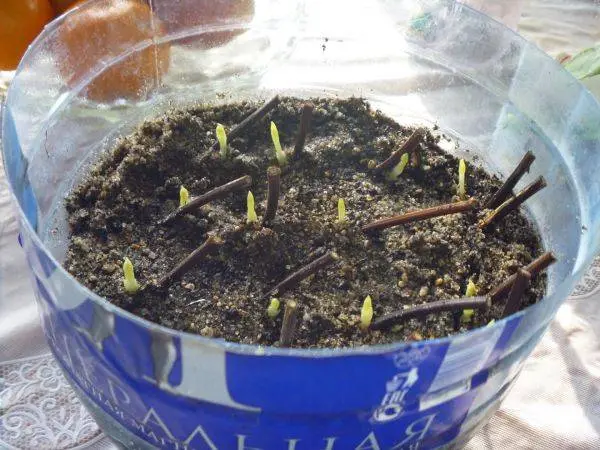
Cultivation
The rules of care dictate the optimal time for planting clematis in the Urals for their successful reproduction – the spring. Over the summer, the plant will get stronger and will normally withstand the winter.
seedling requirements.
If a clematis seedling is purchased outside the planting season, it should be stored until spring or early autumn.
- A seedling, acquired before the onset of cold weather, is added dropwise in the garden. planted in the spring;
- A seedling with a closed root system, bought in the summer, is also not planted immediately in the Urals, but stored in a bright but shaded place. Landing in September;
- Having bought a seedling in the spring with open roots, after arriving at the site, they are immediately soaked in water with the addition of a growth stimulator.
Landing
Clematis in the Urals are planted in a sunny, cozy place where there is no wind. Several vines are located at a distance of at least 1 m. If a site with stagnant melt or rainwater is selected, a hillock is poured, then a hole is dug in it for a vine measuring 0,6 x 0,6 x 0,6 m.
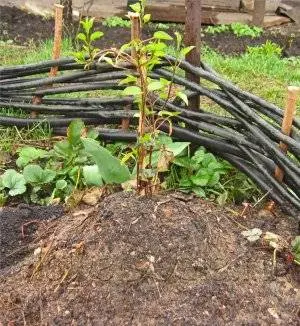
- On acidic soils, a seedling hole is prepared in the fall by mixing the soil with 100 g of lime or dolomite flour;
- Clay soil is diluted with sand for greater permeability;
- Drainage is laid below, fertile soil is mixed with humus 1: 1, adding a complex of special minerals for flowers or 150 g of superphosphate;
- A mound is formed in the hole from fertile soil, a seedling is placed on it and sprinkled with the same soil;
- Water the liana with warm water 21-23 оC. Water is heated at first to keep the still weak plant from rotting. Such care when planting clematis in the Urals will ensure trouble-free development for the plant.

Care
The root system of a powerful vine penetrates to a depth of 1 m. Therefore, the plant should be watered abundantly – up to 30 liters, preferably once a week. In drought, water more often. All varieties of clematis grown in the Urals should not be watered in the center of the bush, so as not to provoke rot. They form a groove around the bush or, when planting, dig in obliquely 2-3 pipes for irrigation. During prolonged rains, the lower part of the vine is sprinkled with wood ash, protecting it from rot.
In preparation for winter, the root neck of the vine is treated with a solution of copper sulfate, then spudded with sand mixed with wood ash. Before frost, the shoots are laid on a bed of leaves, old straw, and spruce branches are placed on top. When clematis is opened in the Urals after wintering, the material is removed gradually, clearing the vines from the pile last. Then cut off the shoots at the root.
Prevent fungal diseases of clematis by prophylactically treating vines with fungicides.
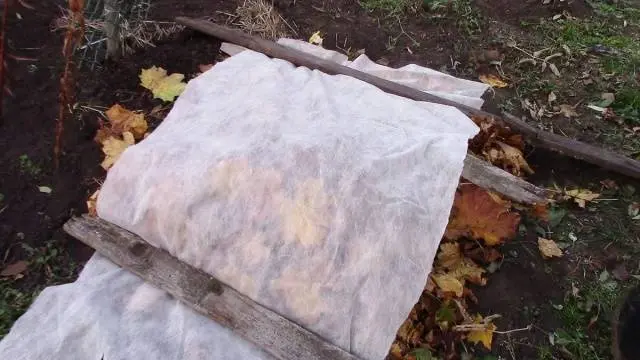
Additional fertilizing
Beautiful and profusely flowering vines need to be fed.
- In autumn, humus and bone meal are poured under the bush;
- At the time when it is necessary to open clematis after winter in the Urals, the bushes are fertilized with ammonium nitrate, urea or nitroammophos;
- At the same time, the soil under the vines is watered with milk of lime to deoxidize;
- In spring, the plant is fertilized with potassium nitrate;
- In summer, creepers are fed with a solution of chicken manure.
A beautifully flowering liana will turn the yard into a cozy space. Small worries will be justified by the creation of a flower waterfall.










